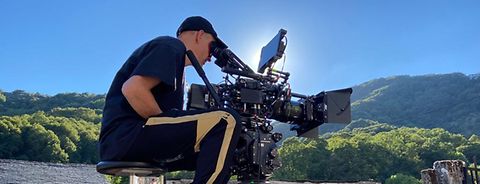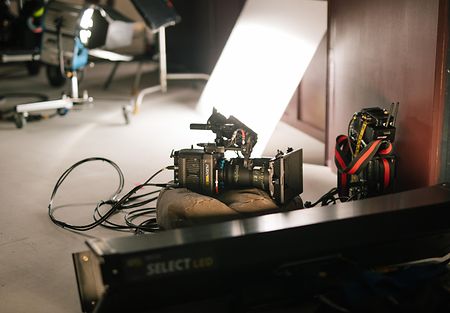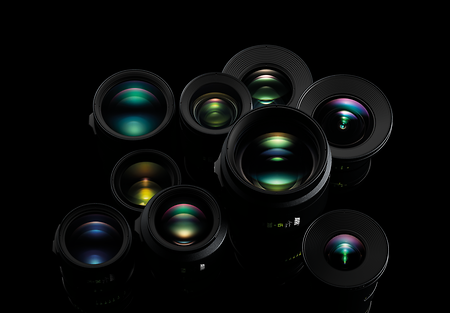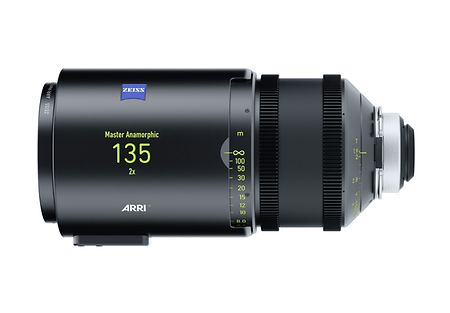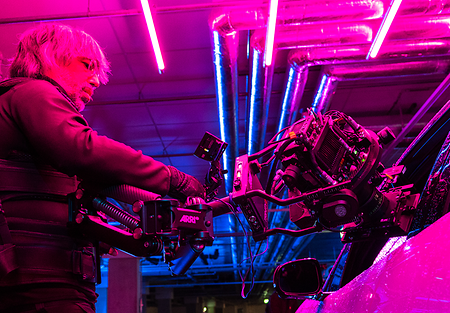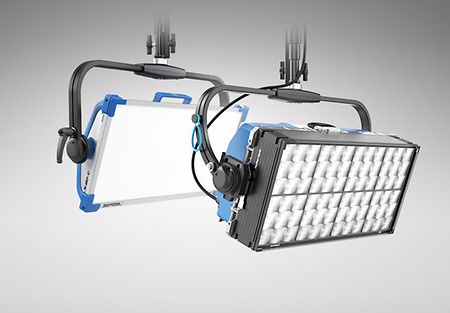“The Beasts” (“As Bestas” in Galician) has already been the most prized film at the last Goya Awards of the Spanish Film Academy, winning nine awards—including Best Film, Best Director, and Best Cinematography. However, the fifth film by director Rodrigo Sorogoyen and cinematographer Álex de Pablo continues to achieve international success, such as its recent award for Best International Film at the César Awards in France. ARRI spoke with DP Álex de Pablo about how he worked with large format and how ARRI lenses helped him in his photographic approach to “The Beasts.”

DP Álex de Pablo (sitting, left) and director Rodrigo Sorogoyen (sitting, right) on set of “The Beasts”
As a regular collaborator of Rodrigo Sorogoyen, you were surely involved right from the beginning of this project. What was your first impression when you read the script?
I read the first version before shooting “The Kingdom” (2018) and I thought it was a story that was told in a very powerful way; part thriller and based on a true story. But the script also had another interesting aspect, the human drama. It not only tells the story of a couple who, when they realize their dream of retiring and living in a village, are faced with the harassment and subsequent murder of the husband, Antoine. The story also talks about the strength of the wife, Olga, who does not give up on the couple’s dream and ends up staying in the village. I found this female character very powerful at the end of the story.
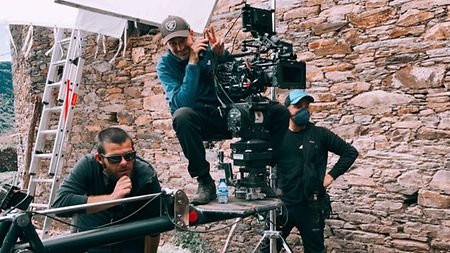
Cinematographer Álex de Pablo (center) shot “The Beasts” with the ALEXA Mini LF
How were your conversations with the director beforehand? Did you work with references for the look you wanted to achieve?
Rodrigo and I like to work from scratch and, in the films we make, we usually set certain limits, such as, for example, not using any lens longer than 50 mm, but then there are always exceptions, although we try to be very rigorous. In this case we agreed that in the first part, which is about two thirds of the film until Antoine dies, there would be a distance between the camera and the characters, because we felt that this helped the viewer contemplate what was happening rather than live it.
Also, the landscape was very important in the story, because, among other things, it was one of the reasons why this couple went to live in the village, and we wanted the viewer to feel like the landscape was another character. So we used Master Anamorphics during this part to give the landscape a stronger presence and to integrate the characters into it.
For the second part we used Signature Prime spherical lenses because we wanted to be closer to Olga and for her to no longer be part of the landscape but for the viewer to be closer to the psychology of this character.
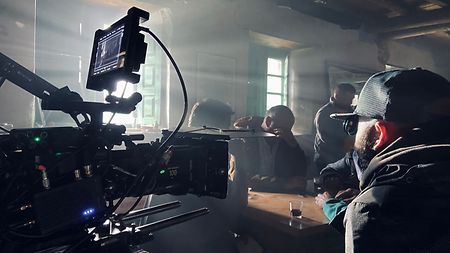
“We used Master Anamorphics during the first part to give the landscape a stronger presence and to integrate the characters into it,” says DP Álex de Pablo
Did you test beforehand to find the right combination of camera and lens for this project?
Yes, I did photogenic and lens tests with a single camera body, the ALEXA Mini LF, because I knew I wanted to work with it. And although I also knew I was going to use the Master Anamorphic and Signature Prime lenses, I tested a multitude of lenses.
In the series “Riot Police” (“Antidisturbios”), also directed by Sorogoyen, you chose to work with large-format and ARRI lenses. Being different projects, what led you to repeat this combination?
It’s a question of sensations. To shoot “Riot Police” I tested different lenses. I didn't want something that was too hard but not too soft either. I wanted an image with a certain sharpness and a certain hardness, and the Signature lenses seemed to have the qualities that suited “Riot Police” very well, being a series about corruption. For “The Beasts" we didn't want the transition from one part of the film to the other to be noticeable to the viewer, so I thought it would help to choose lenses from the same manufacturer, and testing confirmed this. In the second part, the audience should feel closer to Olga, and at the same time, as it is a very hard moment in her life, I wanted the image to have a certain character without being excessively hard but also far from soft. In spite of the dramatic tone, it is still an image that tucks us in a little.
“The Beasts” is shot in the middle of nature. How has the large format of the ALEXA Mini LF helped you in this sense?
The large format gives you a different image because of the depth of field, the amount of information it captures and other differences that I, and those who see a lot of cinema, perceive. With respect to an environment, if you’re going to capture a landscape with more information, that’s obviously a good thing.
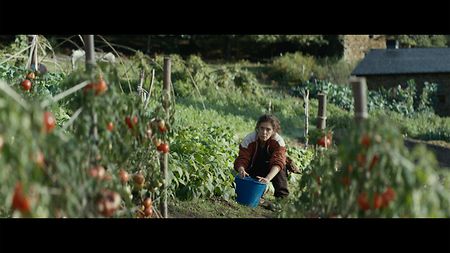
“Large format gives you a different image because of the depth of field,” comments de Pablo
At which ISO and focal lengths did you shoot?
My intention was to have a slightly lower ISO in the first part and a slightly higher one in the second. In the end, it stayed at 800. As for the focal lengths, in the second part we used a wider angle, while in the first, I used neutral focal lengths and a bit more tele.
The two parts of the film also used different camera stabilizer systems; at the beginning the camera rests on cranes and travels, in the second part the camera language changes and is operated with a Steadicam. How did the use of TRINITY help you to change the visual language in the second part?
We were interested in telling the first part in a more contemplative way, without the camera interacting as much with the protagonists as in the second part. It was about seeing these people blend into that environment, and I think that helped the viewer to connect with the protagonists through the landscape and with the landscape through the protagonists.
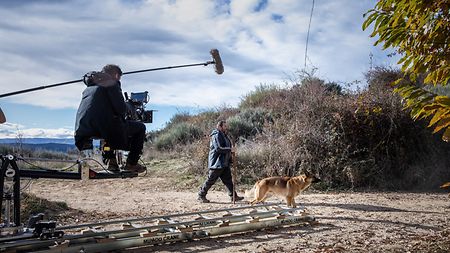
Behind the scenes of “The Beasts”
In the second part, on the other hand, we wanted the spectator to feel like they were closer to our protagonist. For this reason, the first part is shot with a tripod. For the fixed shots or panning, after the first sequences, track movements were introduced to increase the tension. Finally, the last part, after Antoine's death, was shot on Steadicam.
The shot that we consider to be a transitional shot, which is the last shot of the first part of the film, just before Antoine dies, was shot with TRINITY by Niko Lasarte, who helped us to make the transition between more stable supports and Steadicam smoother. TRINITY, when stabilizing, is not quite a tracking shot but it is also not a conventional steady either.
How did you approach the lighting concept of the film in general terms?
From my point of view, to tell most stories, the photography should be unobtrusive, unless it is an additional character. Our intention was to tell a story that could happen to anyone, so the visual language didn't have to draw the viewer's attention or take them out of the story. So, I tried to make the light as unobtrusive as possible.
My approach was to hide lights in the interiors and use light fixtures. In “The Beasts” I used LED sources such as SkyPanels , M-Series fixtures (M18, M40) which I use a lot because, in Spain, most of these kind of lights are from ARRI, and also some tungsten.
Can you explain how you photographed the sequence in the forest for the chase and fight scene between Antoine and the two brothers which marks the end of the first part of “The Beasts"?
It was very complicated in terms of stability and timing. It took us three or four days to shoot the walk that Antoine takes with his dog through the forest until the fight with the two brothers starts. This was shot in a couple of hours, but for the rest we had a lot of problems because the weather played tricks on us.

Niko Lasarte operating TRINITY during the shooting of “The Beasts"
The whole camera language is made up of very long lateral tracking shots, except for the tracking shots in front and behind the protagonist, which were done with TRINITY. That sequence continues with the camera language of the first part and, from then on, we started to work with TRINITY so that it wouldn't be a strong contrast. Already in the fight, the camera starts to participate in the action for the first time, something that helps the transition to the second part.
Opening image: Alberte Vázquez
